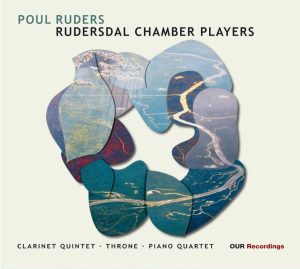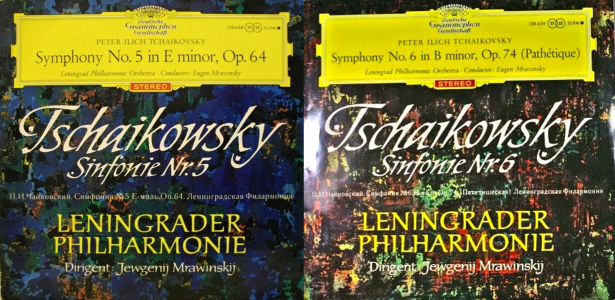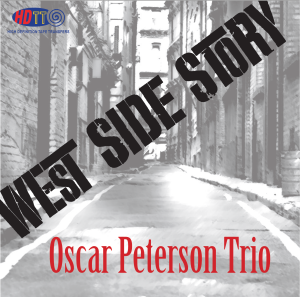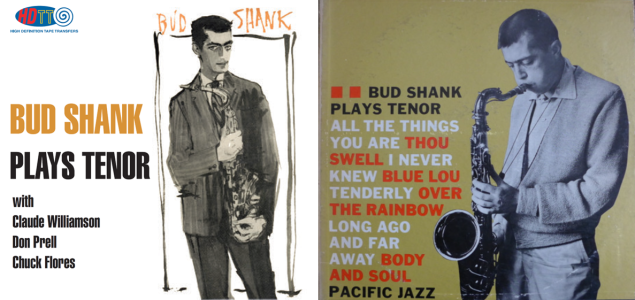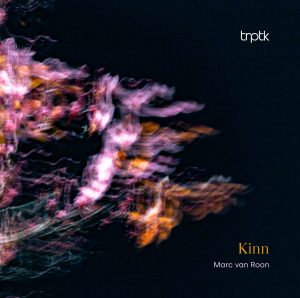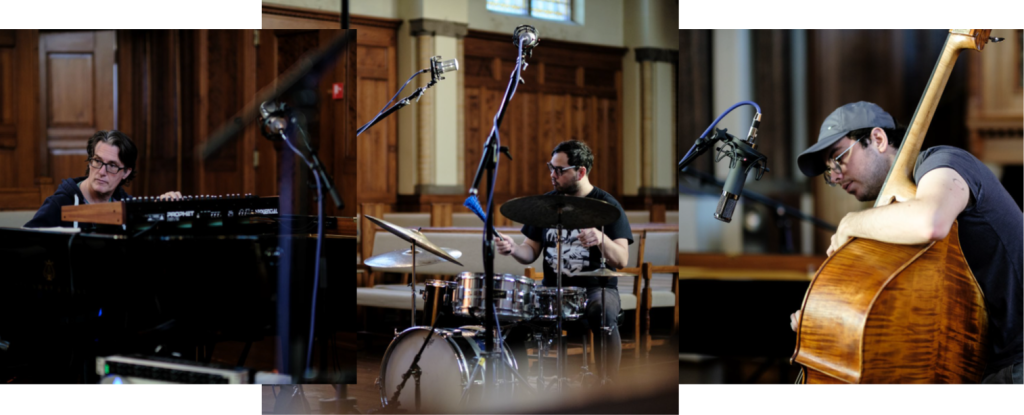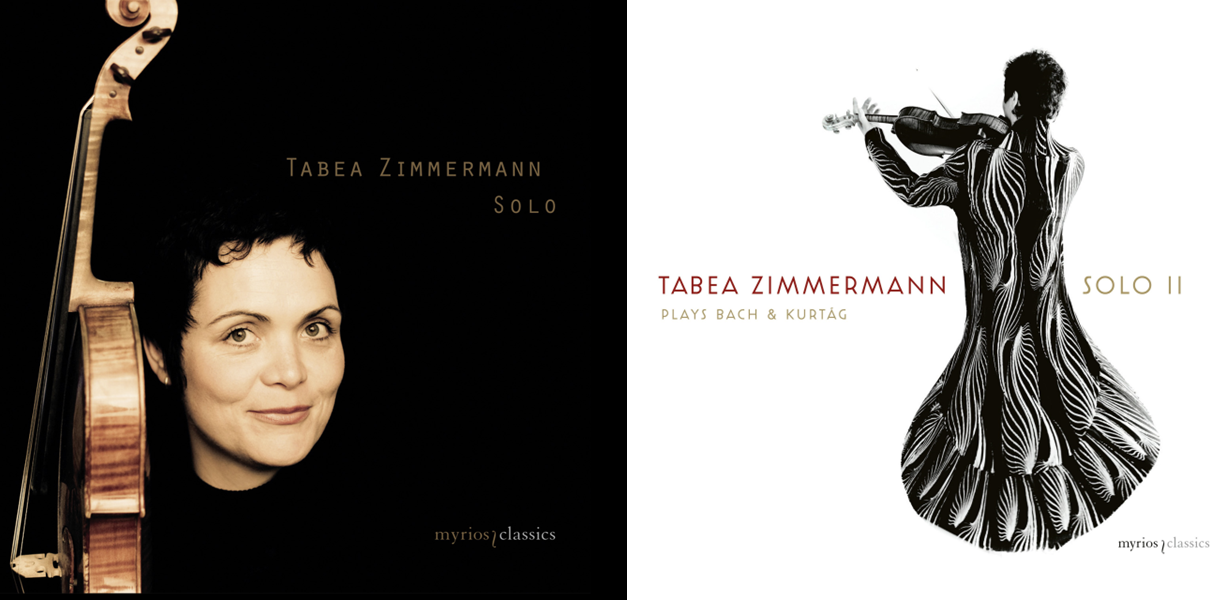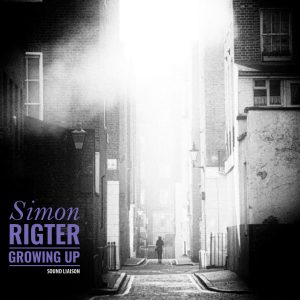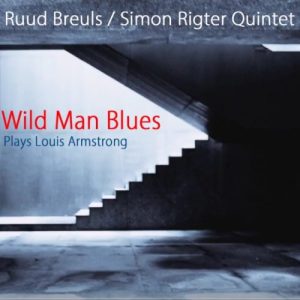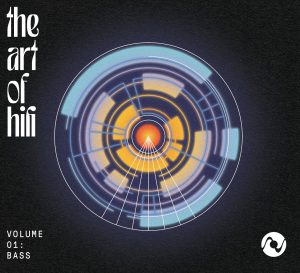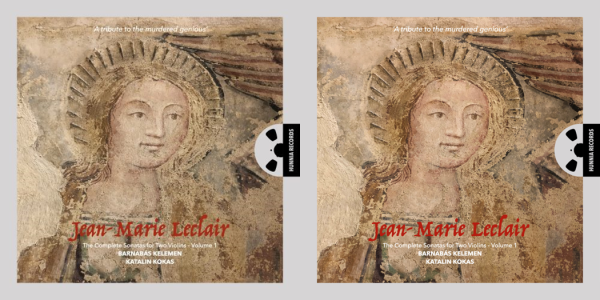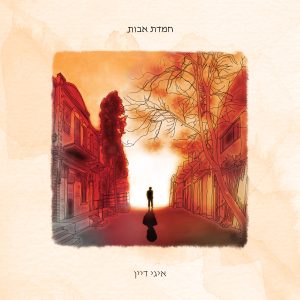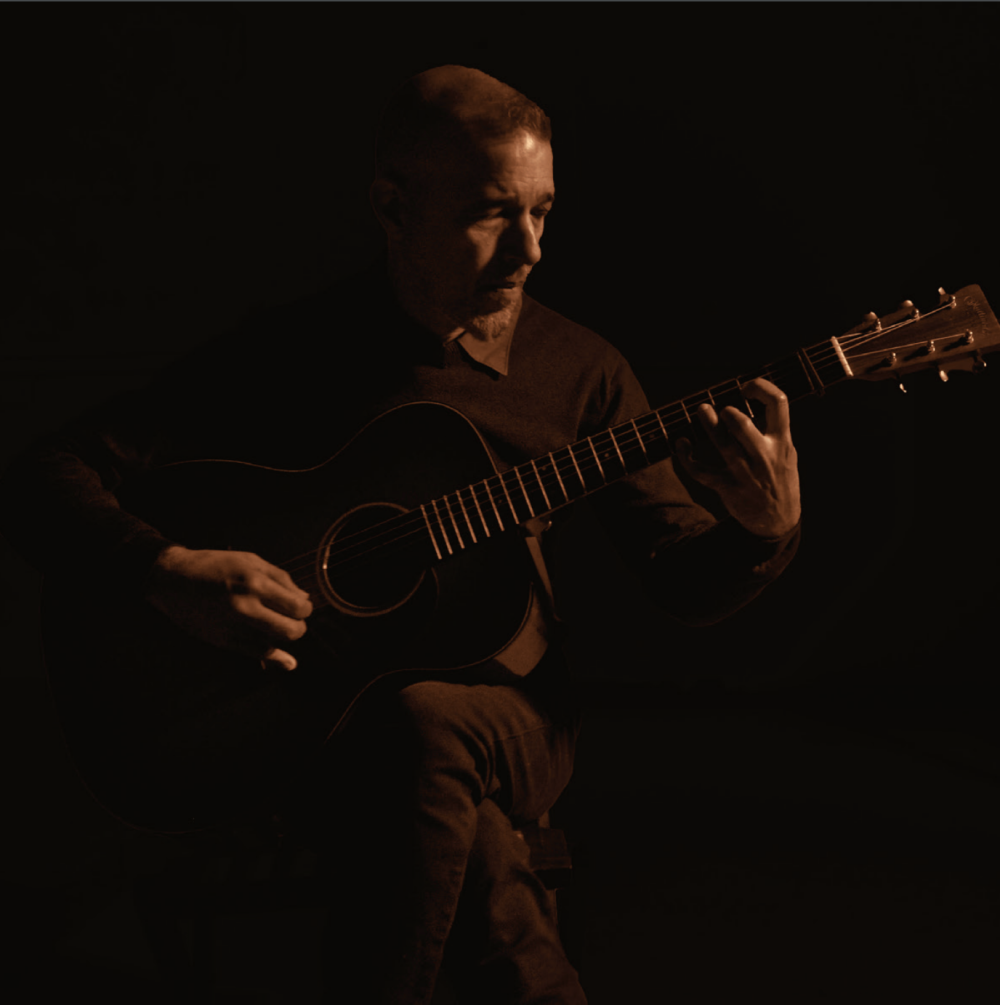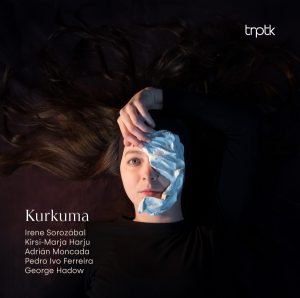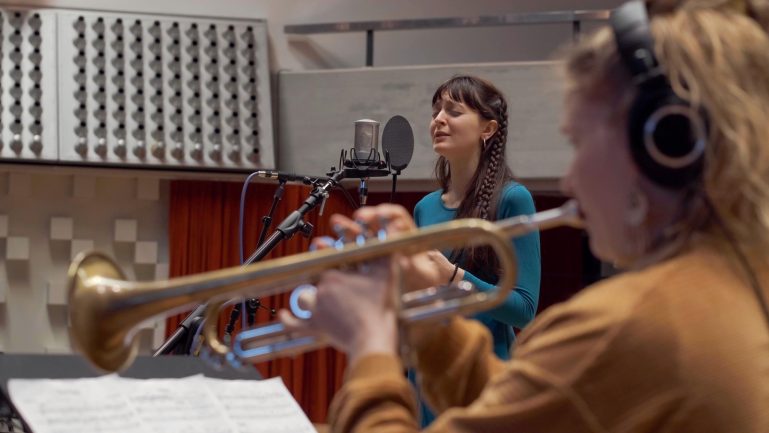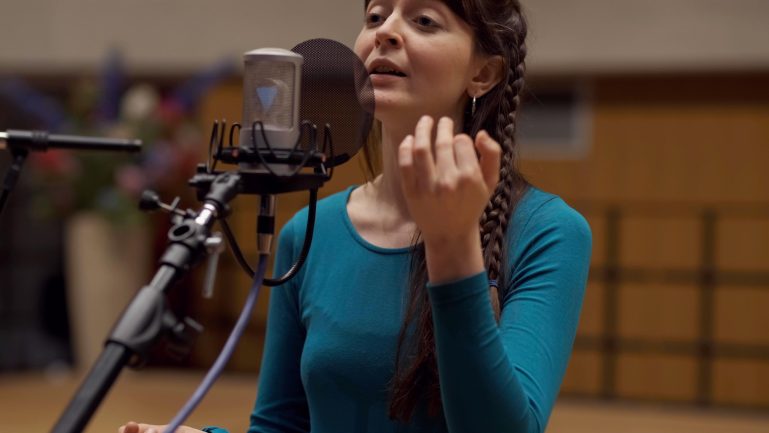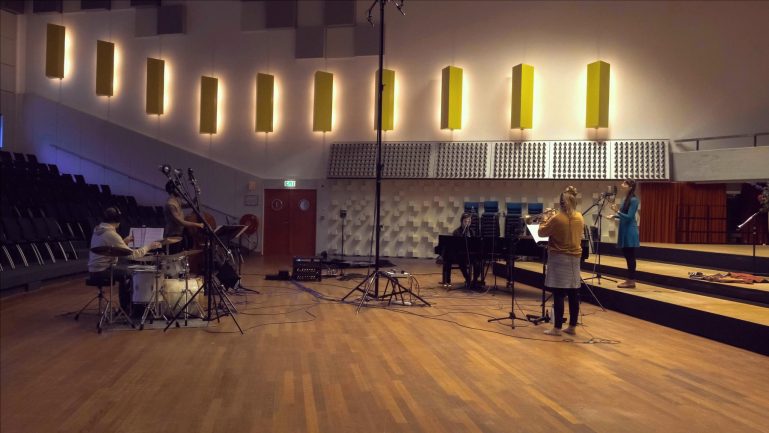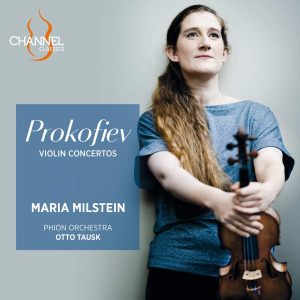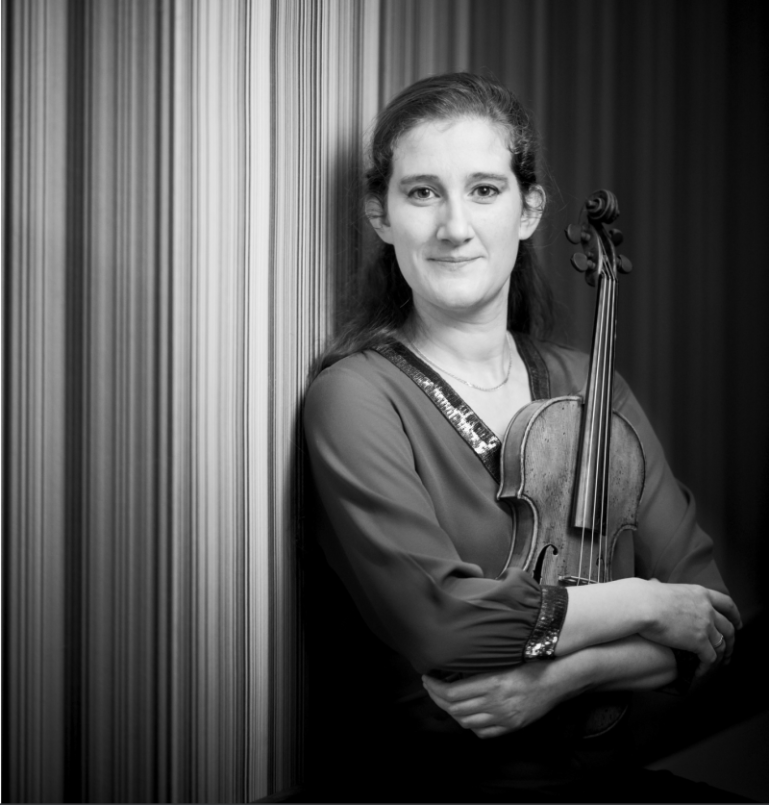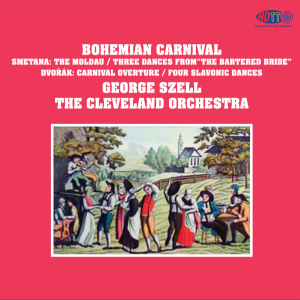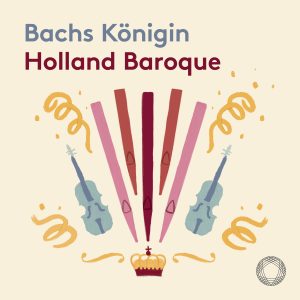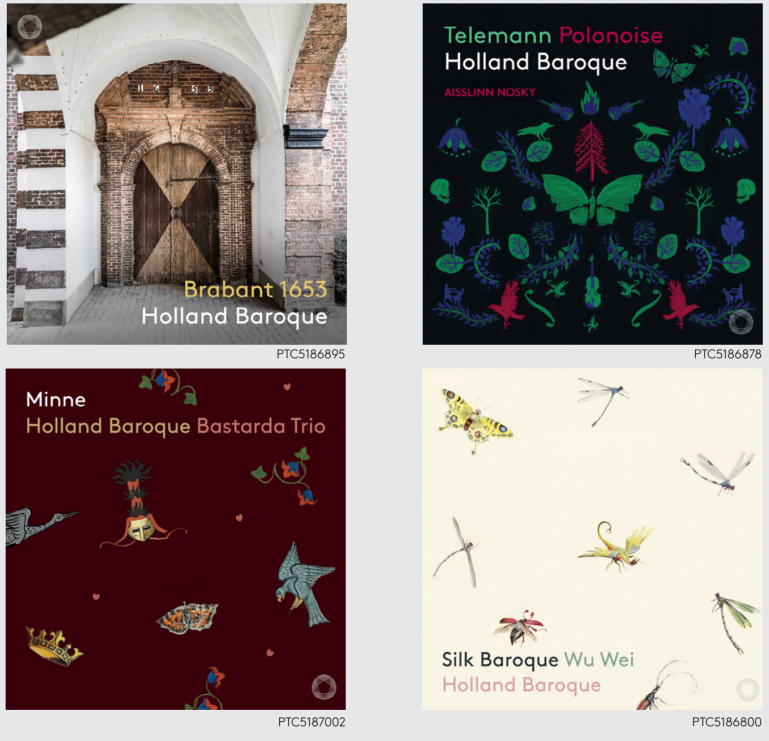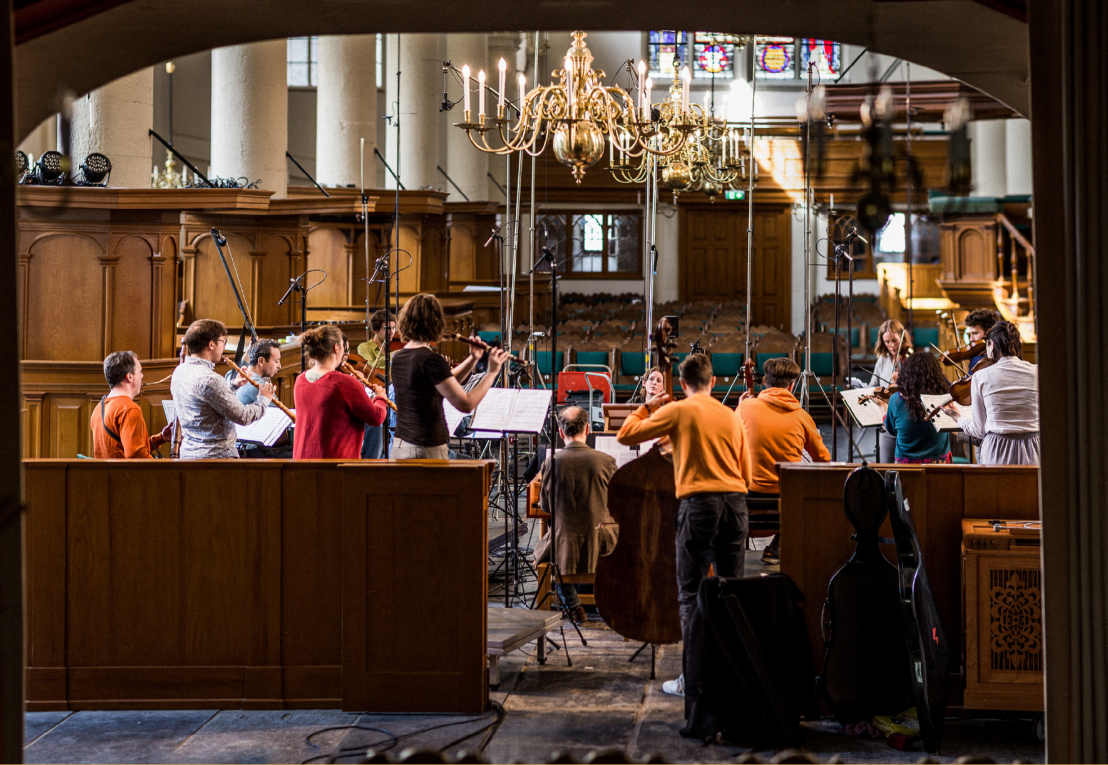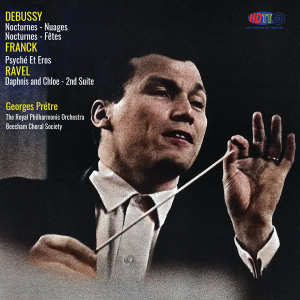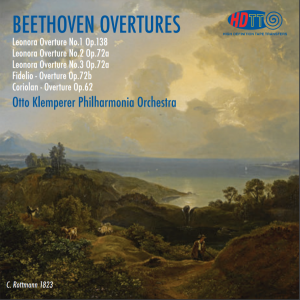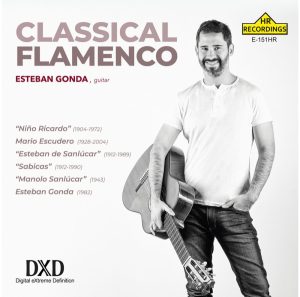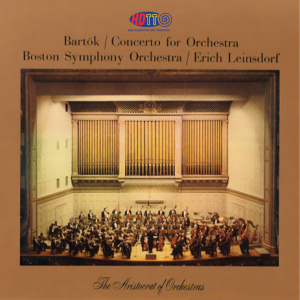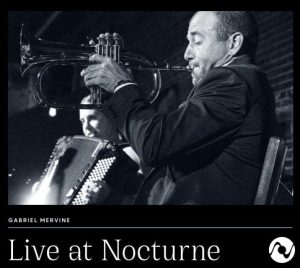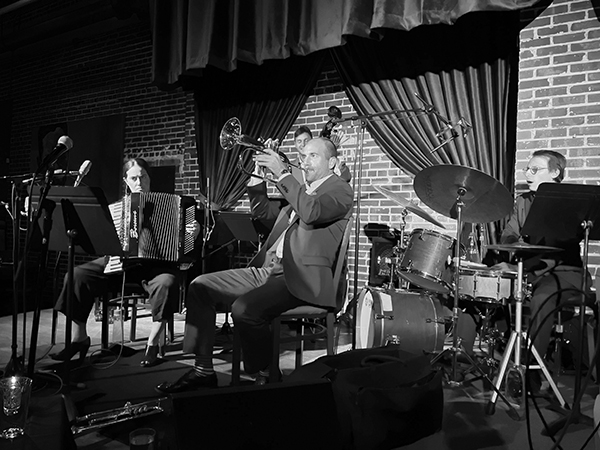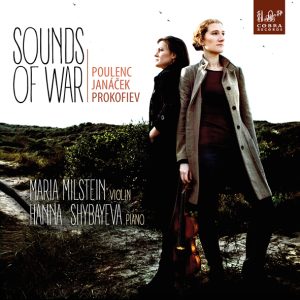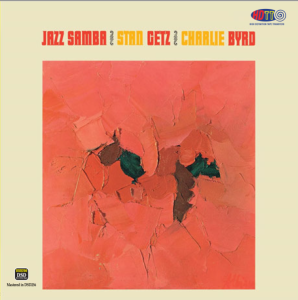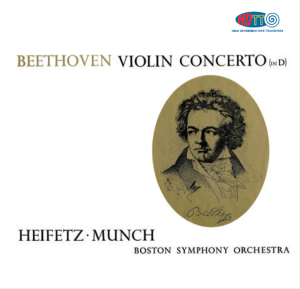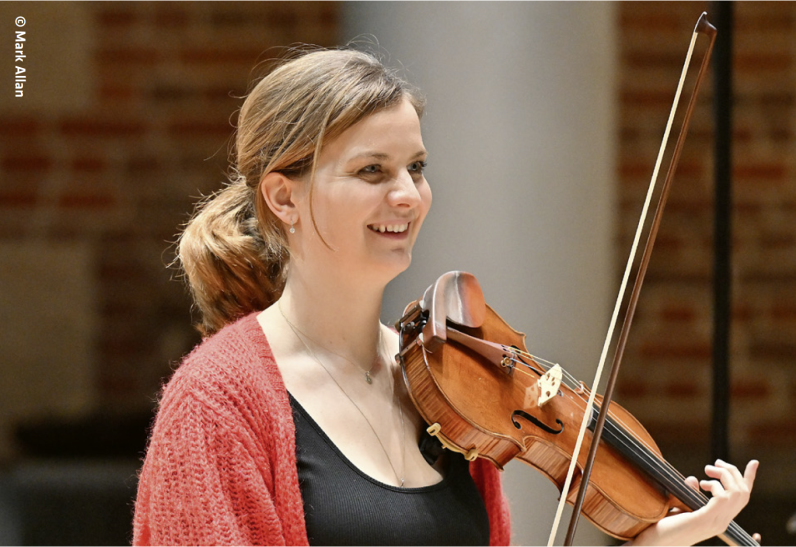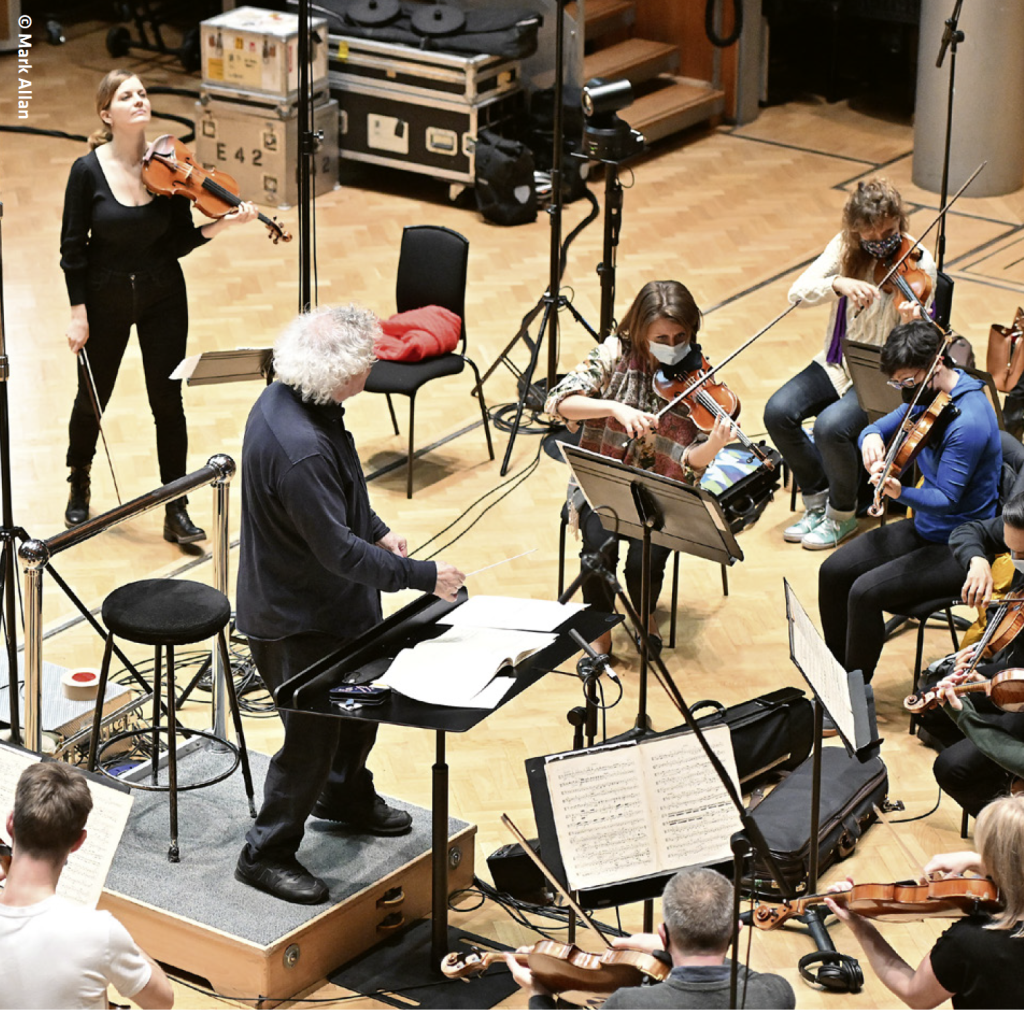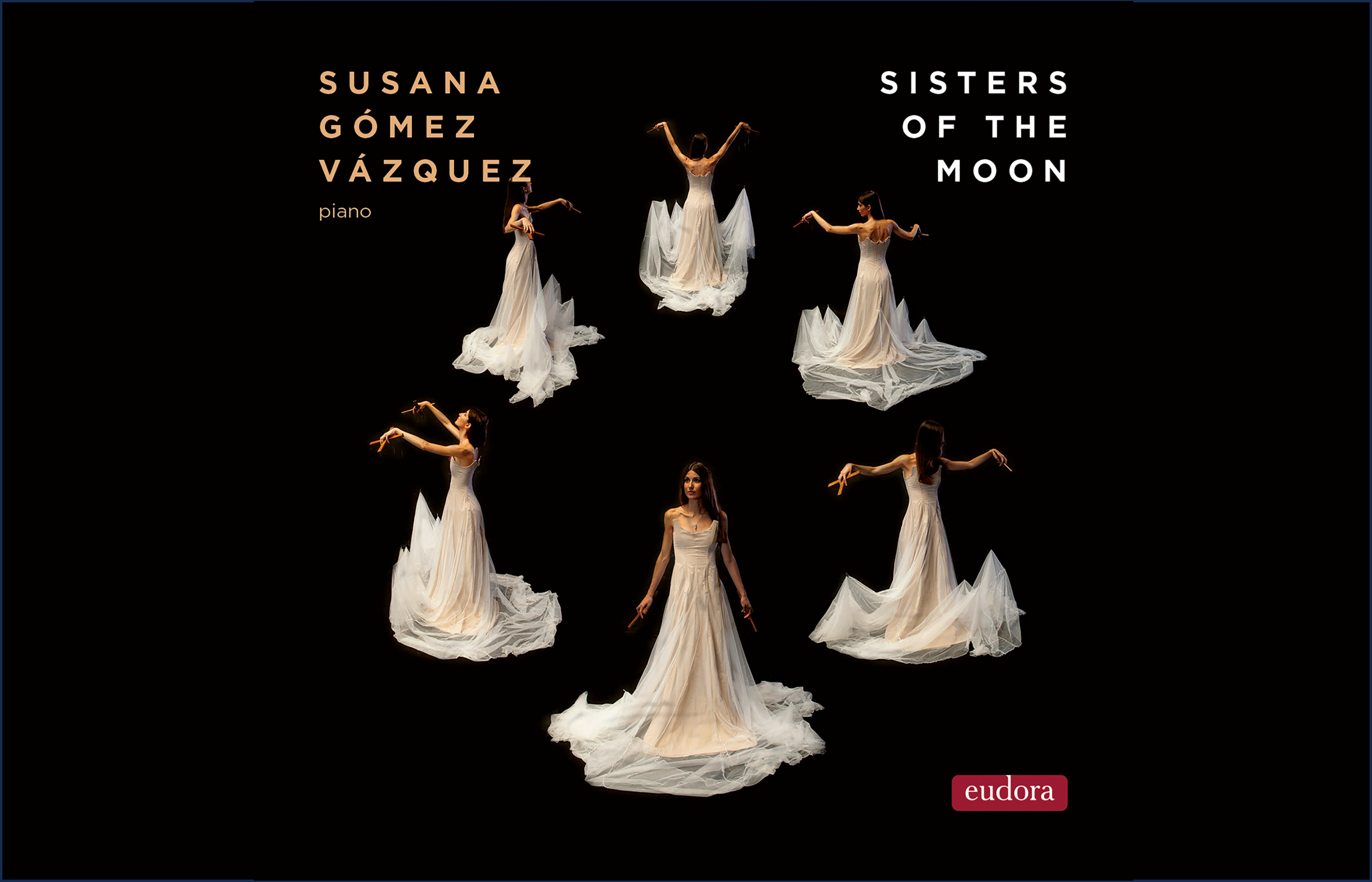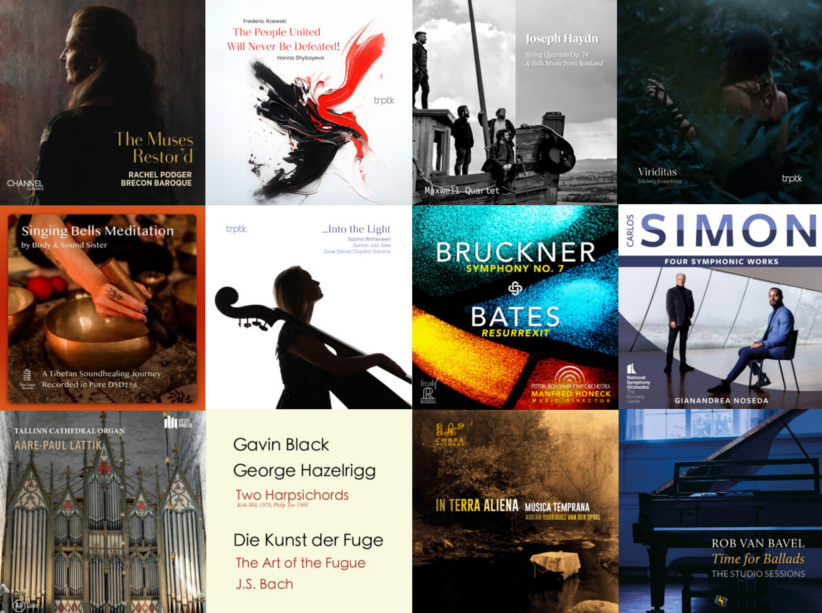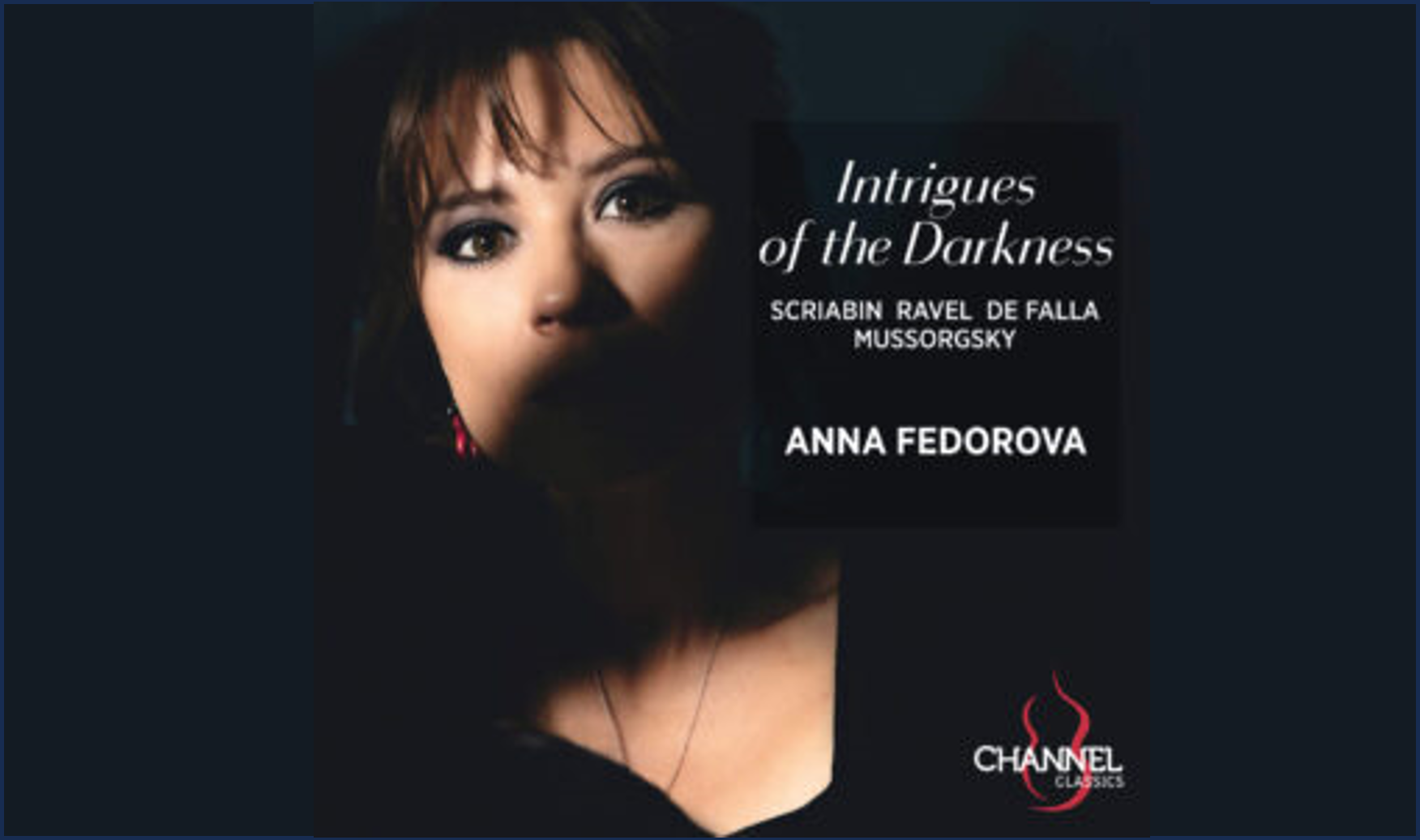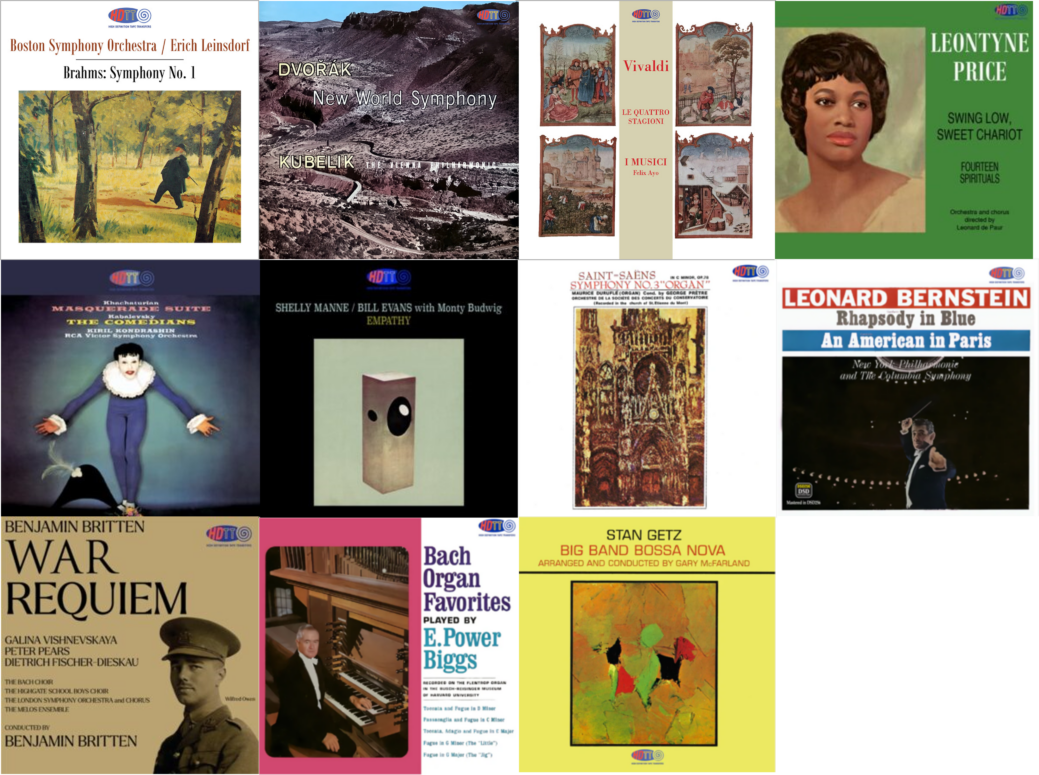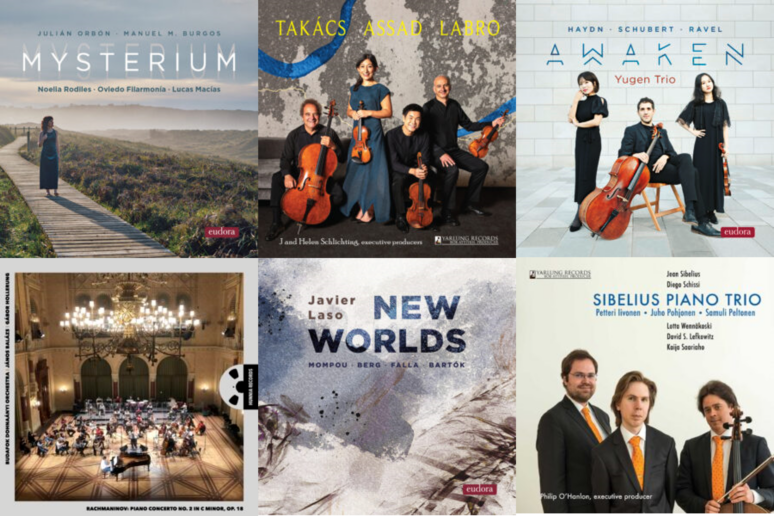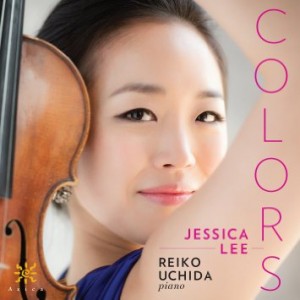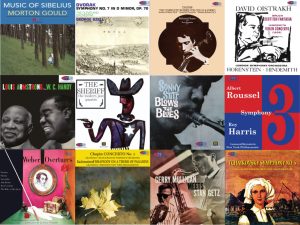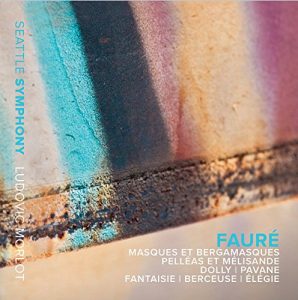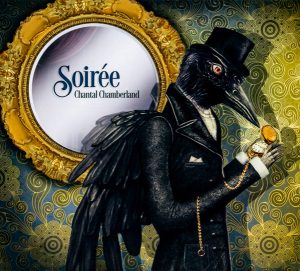This episode provides a potpourri of musical gems that I thought worth bringing to your attention. All are available from HDTT or NativeDSD or Octave Records in either DXD or DSD256. I apologize for the length of this article with well over 20 albums discussed, but publishing opportunities kept pushing this article further and further back in the queue as I kept listening to more and more music. Hope you enjoy.
Poul Ruders Clarinet Quintet, Throne, Piano Quartet, Rudersdal Chamber Players, Our Recordings 2022 (DXD) HERE
Danish composer Poul Ruders (b.1949) is a new musical voice to me, but as I research a bit I see that he has quite a large catalog of compositions across a wide range of genres. He's had commissions from all the Danish orchestras, but also from a variety of other major ensembles such as the New York Philharmonic, Berlin Philharmonic, BBC Symphony Orchestra, Dallas Symphony Orchestra and others. To his credit are six symphonies and five operas, as well as a variety of chamber music.
I've very much enjoyed these chamber music pieces written over a period straddling three decades, the clarinet and piano piece Throne from 1988 through the Clarinet Quintet (2014) and the Piano Quartet (2016).
Throne was composed on a commission by the Concert Artists Guild for the Swedish clarinet virtuoso Håkan Rosengren, who came out First Prize Winner of the 1987 Concert Artists Guild International New York Competition. Ruders declines to offer any explanation of the work, preferring that the listener come to it with ones own ears. He does comment: "I can say though, that toward the end, there's possibly the longest stretch of nobody playing before picking up again, a so-called general pause, in the history of Western music outside John Cage..." And that pause I was not expecting on first listen—I found myself checking to volume level! It comes right at the beginning of the piece, with nearly 45 seconds of silence before the first low, soft note from the piano, followed by the clarinet. Overall, I found this a very engaging work that must have been extraordinarily challenging for the clarinetist, as intended.
The Clarinet Quintet (2014) and the Piano Quartet (2016) are stylistically different from the 1988 Throne. as one might reasonable expect given the time span separating their composition. These works push less on the boundaries of convention, they are more "mainstream" tonal works, but still filled with invention and exploration.
Ruders writes that the Clarinet Quintet came about as a commission by the British clarinetist Harry Cameron-Penny, and was written in 2014 for him and The Benyounes Quartet. There are three movements: Avanti alla breve; Adagio Sognante; Animato. It's a piece that doesn't carry with it a statement or 'message.' It's quite simply a composition for clarinet and string quartet, with the clarinet as the dominant voice, on top of and in between the four string instruments, exploring the endless sonorous treasures lying hidden in that particular instrumental combination."
Of the Piano Quartet, Ruders writes that it was written as a commission "between 2015 and 2016, just in time for its world premiere by Anne-Marie McDermott and Ensemble Opus One at the Bravo! Vail Music Festival, Colorado..." It is largely a gentle piece, filled with delicacy and introspection, but with wild brash outbursts of rather anarchist nature. Quite enjoyable, if not always "lovely" (thankfully!).
Ruders is a self-taught composer. His language is largely tonal, but definitely modern, reveling in contrasts and sharp atonal outbursts. No, I'm not being entirely contradictory here in this statement, but to understand you'll need to listen. In sum, I've enjoyed this album immensely and will now seeking more of Ruders' recorded compositions. Highly recommended.
The Rudersdal Chamber Players (Rudersdal Kammersolister) is not named for Poul Ruders. It is named for the Danish village of Rudersdal, north of Copenhagen, where the ensemble is based. Among other activities, they are the ensemble in residence at the Rudersdal Sommerkoncerter music festival. Founded in 2017 they perform throughout Denmark with international tours planned. The core of the ensemble is a piano quartet, but they perform in different settings including clarinet quintet, piano quintet, flute quartet, piano trio, string quartet and string trio. They write, "This flexible set up allows them to fit into various kinds of venues, to accommodate miscellaneous repertoire demands and to collaborate with composers performing a substantial part of their chamber music production." Indeed, as heard so delightfully here!
Tchaikovsky Symphony No. 5, Mravinsky, Leningrad Philharmonic Orchestra. HDTT 1960, 2022 (DSD256/DXD) HERE
Tchaikovsky Symphony No. 6, Mravinsky, Leningrad Philharmonic Orchestra. HDTT 1961, 2016 (Pure DSD256) HERE
The recordings of Tchaikovsky symphonies that Mravinsky and the Leningrad Philharmonic made for DGG are perhaps my favorite recorded performances for each of Tchaikovky's symphonies. HDTT had previously released the Sixth, and now the Fifth. I hope they will be able to find sources to release the others.
In both recordings, the performances by Mravinsky and colleagues are spot on. The performances are filled with beautiful lines, color, emotional intensity, and thrilling climaxes. The sound in both recordings (made a year apart) is detailed and well balanced. The sonic image is big and natural. They display all the nicer qualities of the DGG Tulip recordings of the 60s. The sound quality of the transfers is terrific—I am completely delighted with them. I suspect you will be, too.
Original Deutsche Grammophon covers from 1960 and 1961, courtesy Discogs.
Oscar Peterson Trio: West Side Story. HDTT 1962, 2017 (DXD) HERE
In idle moments I sometimes think this music is too much for a jazz trio, then I listen again… Oscar Peterson captures the essence, and all is good with the world. No, this won't be the Bernstein orchestral transversal (also available here at HDTT and terrific), but here we have an innovative jazz trio rendition that goes a long way to capturing this music plus adding that effervescent Oscar Peterson flair. Great sound, great transfer.
What makes this such a special album? Well, at the time the Oscar Peterson Trio went into the studio, West Side Story was hugely popular from both the Broadway musical and the film version that followed. Many records were already being made of its music. So, rather than rehearse on the selections prior to recording, the Trio spontaneously created impressions of the musical's themes on the spot during the recording. Improv at its finest.
Bud Shank Plays Tenor, with Claude Williamson, Don Prell, Chuck Flores. HDTT 1957, 2019 (DXD) HERE
Original Pacific Jazz cover on the right
From the liner notes: "As its title promises, Bud Shank Plays Tenor eschews the jazzman's signature alto and flute, and while the leap to tenor doesn't dramatically impact his overall sound and style, it does add soul and depth to his lyrical solos. Paired with pianist Claude Williamson, bassist Don Prell, and drummer Chuck Flores, Shank crafts a radiant set of standards spanning from 'All the Things You Are' to 'Long Ago and Far Away,' and while none of the performances reinvent the familiar material, the robust approach sets the session apart from his other Pacific Jazz dates."
Good music, good playing, a very nice overall vibe. The recording and the HDTT transfer are excellent: very open, clean. As commented by Anonymous on the HDTT site: "Bud Shank's solos are very fluid and he is backed up by capable musicians. The piano playing of Claude Williamson are stand out performances for me and complement Shanks' lyrical solos." I agree. Perhaps the most enjoyable Bud Shank album I've heard.
Kinn by Marc van Roon. TRPTK 2022 (DXD, DSD256) HERE
On the more contemporary side of things, Marc van Roon and companions take their piano, bass and drums trio down some innovative, exploratory avenues. As always with Marc van Roon, we here have some excellent improvisational music, filled with varied and unique sound combinations and rhythms that defy easy categorization. Is it jazz? Is it classical? There are no traditional rules applied here. The trio is comprised of Marc van Roon on piano and synths, Omer Govreen on double bass and Tristan Renfrow on drums. The acoustic environment of Schiedam's Westvest90 Church in the Netherlands once again provides just the right acoustic space, that Brendon Heinst leverages beautifully.
Brendon recorded this in DSD256 and then mixed it in DXD. All DSD release resolutions come from the DXD master. You should choose the format with which your DAC gives you the best sound. For my DAC, which converts everything to DSD on input, the best format is the one closest to the edit master or DXD in this case.
Tabea Zimmermann, Solo I and Solo II, Bach's Suites for Solo Cello plus Reger and Kurtág. Myrios Classics 2009, 2021 (DSD64, DXD) HERE
While separated by 10 years, these two recordings together offer all four of Bach's Suites for Solo Cello arranged for viola, superbly performed by Tabea Zimmermann. In each album, the Bach Suites are separated by complementary works by contemporary composers. In Solo 1, Zimmermann has chosen the three Suites for Solo Viola by Max Reger. In Solo II, she gives us six pieces for viola from Signs, Games and Messages by György Kurtág. Both choices work very well contrasting, but not clashing, with the Bach Suites.
The Kurtág works I found intriguing, as much for their inherent beauty as for their intimacy. Among the pieces is "…eine Blume für Tabea…" ("A Flower for Tabea"), dedicated by Kurtág to Zimmermann after the untimely death of her husband. "There seems to be no beginning and no end in this piece. It requires the most delicate tones—mere suggestions, and then it's already over, as if Kurtág had wanted to set the fleeting passage of time to music." A friend of mine describes this work as "a haunting minute of two voices talking through time." And it does play softly, so turn up the volume and do not miss this piece. It is treasurable.
Enjoy for the Reger and Kurtág works; they are well worth the journey. Treasure the album for her Bach. Altogether, a very nice album.
Growing Up, Simon Rigter, with Cas Jiskoot, Joost van Schaik, Karel Boehlee, Vincent Koning. Sound Liaison 2023 (DXD) HERE
I didn't know tenor saxophonist Simon Rigter, but this album has made me a fan. Of course it helps that this is yet another superb recording by Frans de Rond whose work for Sound Liaison is consistently excellent. Recorded at MCO, Studio 2 Hilversum in December 2020 and just released in January 2023.
The music is a warm, somewhat mellow, traversal of familiar ballads given a distinctively new breath of life. As the liner notes say, it's a sound somewhere between a smile and a tear, a sound that touches your heart. It's passion with controlled emotion combining melancholy, tenderness, compassion and warmth. Just lovely.
This will now cause me to get his earlier collaboration with Ruud Breuls, trumpet, on their album, Wild Man Blues—a live recording of the music of Louis Armstrong (HERE).
Wild Man Blues (Plays Louis Armstrong), Ruud Bruels, Simon Rigter Quintet. Sound Liaison 2018 (DXD) HERE
This album is a nice collaboration between trumpet player Ruud Bruels and saxophonist Simon Rigter (with his quintet) in this traversal of tunes so often played by Louis Armstrong. There is no doubt these musicians can play jazz. Is this Louis? No. But it is a nice tribute to his performances and it is well played.
But what is particularly special about this album is that, like all the best recorded jazz, it is played and recorded live before an audience (of 80 people in this case). The musicians were placed in front of a stereo pair of microphones with additional spot microphones on each instrument. No headphones on the musicians, they have to hear each other to balance their sound in the room—just as in a live performance, which this is.
The recording is nicely clean and very clear, with excellent capture of the instruments. Recording engineer Frans de Rond gives us yet another immensely satisfying listening experience. The sound junkie in me is happy, happy, happy.
The Art of HiFi, Volume 1: BASS. Octave Records 2023 (DSD256, DXD) HERE
Accurate bass response is the foundation for enjoyment of much of our recorded music. Assessing how your system performs in this respect is a very useful endeavor. But so often our exposure to bass is 1) hard to come by and 2) of very indifferent quality. Octave Records is seeking to help us out with the release of the The Art of HiFi: BASS. Since this is labeled Volume 1, I hope this is the start of what will be a continuing series of albums covering different aspects of music reproduction in our listening rooms.
The music here is much more engaging than I'd anticipated, so it all makes for nice listening as well as critiquing and assessing the system. The music includes acoustic bass, electric bass, synthesized bass, and organ (not the electric keyboard organ, but the real thing in a real acoustic environment).
No specifications are offered about the frequency ranges covered on the various tracks. The lowest frequencies are fun (and there are a bunch here). If your system can reproduce them, you can shake the house and vibrate your innards. But the lowest bass notes are not the most revealing about building a truly accurate playback system. So, it is nice to have an album that covers bass as reproduced across so many instruments, from drums and other percussion, to strings, to winds, this album delivers nice recordings of a wide range of textures and timbre. And, it is all very clean, very articulate, very transparent.
For more information about managing bass reproduction in your listening room, I recommend reading Norman Varney's article here at Positive Feedback: Bass is Always a Problem
I hope Octave will be looking back to the Opus 3 series of educational LPs that additionally addressed the key parameters of timbre, imaging and dynamics. A discussion of what to listen for would be a great addition to any of their future volumes in this (hoped for) The Art of HiFi series.
Opus 3 Test Records 1, 2 and 3 from circa 1979-1982. (Images courtesy Discogs.)
Leclair: The Complete Sonatas for Two Violins, Volumes 1 & 2, Barnabas Kelemen, Katalin Kokas. Hunnia Records 2020 & 2023 (DXD) HERE and HERE
French composer Jean-Marie Leclair (1697 - 1764) is not regarded as one of the greatest masters by later generations, and this is such a shame. It is quite possible because one needs to actually HEAR his music performed by musicians with a great passion for what he has composed. Music historian tend to read the manuscripts, and that can be a dry way to understand the music. Some fifteen years after these works were composed, Mercure de France wrote the following description of the sonatas: "they appeared at first a kind of algebra capable of rebuffing the most courageous musicians." Oh, dear.
But when Leclair's music gets interpreted by such such outstanding violinists as Katalin Kokas and Barnabás Kelemen, it comes to life with a complexity and beauty that is a joy to hear.
They have also taken the extra effort to meet Leclair where he lived in their choice of instruments. While both violinist play "modernized" instruments, on their bottom three strings they use gut strings with silver spinning. They explain: "By the early 18th century such strings had already been in use. And our instruments and our ears appreciated the 437Hz tuning the most." Barnabás Kelemen explains further that, "In addition to the gut strings, the bow is also important. Compared to today's bows, we must form the sounds with it in a very different way, and in many aspects, it works differently as well. Kati has a replica of a 17th century Baroque bow, I have one from the early 18th century, so these bows fully match what was used back then."
And thus our ears are treated to a very special sound. Lower in pitch due to the 437Hz tuning; more textured and resonate in timbre. It brings a different life to the music.
Kelemen and Kokas give us lively, energetic performances, filled with variety. Can two volumes of music for violin duo become overwhelming? Hmmm, yes, a bit. So I take my enjoyment of these works in parts. Two or three sonatas at a time. Thus, I can concentrate on what each has to say. And each, heard this way, is indeed different. Each has a different voice and a different message to share. All are delightful. And supremely well played.
The music is pleasing. The performances are fresh, lively and alert. The sonics are excellent. Certainly recommended.
Hemdat-Avot, Iggy Dayan. Regg Records 2023 (DXD, DSD256) HERE
A thoroughly captivating solo guitar and voice album of folk tunes by Israeli musician Iggy Dayan. Nicely performed and recorded. Can't understand a word of it—but that's not a problem.
As NativeDSD customer Tania Amar comments on the album page: "It is not at all essential to understand the words in Hebrew to be immediately transported by the invitation to travel. To the heart of the kibbutz where Iggy lives and from where he recorded this magnificent album. The authenticity and purity of the sounds will penetrate you to the bottom of your heart."
Yes, there is a bit of overload on the voice in loud passages, which can be a bit distracting and I wish it were not there. But the overall performance and recording quality rise well above any concerns on this point.
I recommend you find your quiet place, turn the lights out, and let this album wash over you. Recommended.
Iggy Dayan portrait, courtesy Regg Records.
Kurkama, Irene Sorozábal, with Kirsi-Marja Harju, Adrián Moncada, Pedro Ivo Ferreira & George Hadow. TRPTK 2022 (DXD) HERE
Boundaries defying—is it experimental jazz, is it avant garde classical, or something altogether its own? I vote for the last. As with all of Brendon Heinst's TRPTK releases, it is beautifully recorded. Composer and singer Irene Sorozábal seems incapable of being restrained by our definitions of genre. She is a classical musician by training, but in her own compositions she consistently pushes the boundaries of jazz and classical to find a musical expression entirely her own. In this album, she performs voice and recorder, and is accompanied by an ensemble including trumpet, piano, double bass and percussion. Since this is released on NativeDSD, you can listen to full length tracks at 48kHz to see if the music appeals to you as much as it does to me. Of course, only the DXD download will give you the full measure of the excellent sonics from TRPTK.
About the compositions, Irene tells us "This album arises from an exploration of my own musical language which merges a variety of influences from early counterpoint to contemporary jazz. As a Classical musician, I sometimes feel trapped in a world of innumerable protocols and expectations, that is why when composing these songs, I tried to silence the critical inner voice which accepts only masterpieces and original ideas. Instead I sensed what was already there, ringing in my ears and tingling my belly."
Recommended.
Recording session photos, June 19 & 20 2022, Muziekcentrum van de Omroep (MCO) Studio 1 in Hilversum, Netherlands. Photos courtesy of TRPTK.
Prokofiev Violin Concertos Nos. 1 and 2, Maria Milstein, violin, with the Phion Orchestra, Otto Tausk conducting. Channel Classics 2023 (DXD, DSD256) HERE
Oh, yes. I'm hopelessly addicted to the music of Prokofiev—there is so much to like, so much to explore. But here are two mainstays: the Violin Concertos. Each is very different from the other, coming from different eras of his life. But both are nicely played. Maria Milstein has become, for me, a favorite violinist. She has a nice touch and I like her musical sensibilities very well. (She also performs as a member of the Van Baerle Trio to marvelous effect.) Does she replace my love of the Kyung-Wha Chung performances on Decca? No, but I now grieve less my loss of those LPs from our downsizing.
The performance is enhanced by the excellent sound quality given us by producer and recording engineer Jared Sacks. It is at his usual very high level of excellence.
Maria Milstein portrait. Photo courtesy of Channel Classics.
Bohemian Carnival, George Szell, The Cleveland Orchestra. HDTT 1962, 2023 (DXD, DSD256) HERE
This is a delightful new release from HDTT! I imprinted on the Columbia LP growing up and never had the opportunity to hear the U.K. released SAX2539 LP which undoubtedly sounded much better. So, I am very pleased to find it from HDTT in so much improved sound quality.
Szell makes a fine performance of The Moldau even if not to the standard of the more characterful performances by Tallich, Ancerl, Smetácek, et al. His Bartered Bride is the more engaging performance, and it is very very good. And his Dvorak is "spot-on" for me, with a very lively engaging Carnival Overture and characterful Slavonic Dances.
In comparison, the CD from the "Complete Columbia Album Collection" is quite good, but it simply lacks so much in the way of resolution, air, natural timbre, and frequency extension by comparison to this new HDTT release. I have lived with the CD quite happily up until today. But I doubt I'll ever listen to it again—it simply sounds flat, hard and "ham-fisted" by comparison. Not bad, mind you, just lacking the resolution, dimensionality, air, and wonderful analog goodness that HDTT captures in this transfer.
Another purchaser of this album provides some very useful comments for those wondering about the music performance quality, and I'm taking the liberty of quoting his very cogent comments because I've found that I so often agree with his posts. From Rob P., United Kingdom, on the album page at HDTT:
"Vltava is relaxed; the gorgeous melodies and leitmotivs in each of its six sections are beautifully phrased and played. The three dances from The Bartered Bride are delightful (you could write an essay on Szell's use of rhythmic and dynamic variation, instrumental balance, tonal variation and weighting and the final accelerando in the Polka) and the precision of the Dance of the Comedians is exhilarating, without ever sounding rushed.
"Then we have equally brilliant accounts of Dvorak's Carnival Overture and four of his most popular Slavonic Dances, where the tempo changes are effortless and you can hear that the Clevelanders are really enjoying themselves (the woodwind smile, the string articulation sparkles)."
All-in-all, a very wonderful reissue from HDTT. Clean, quiet, very low noise floor, excellent resolution. It's a winner.
Bach's Königin, Holland Baroque. Pentatone 2023 (DXD) HERE
Bach's Königin is comprised of selected organ music compositions by J.S. Bach transcribed (with some good success) for chamber ensemble. It is all nicely played and well recorded. If you like Bach's Organ Trio Sonatas, this will likely appeal to you as it does to me.
Bach's most beautiful works are perhaps those that he wrote for the organ, as it was his favorite instrument. Over time, many people have found opportunity to make arrangements of these works for other instruments--the transposition often works very nicely. Here, Holland Baroque passes these masterpieces on to the orchestra.
Holland Baroque members Judith and Tineke Steenbrink created the transcription. Their choices result in innovative works that sound as right and natural as I might imagine, retaining Bach's clear signature in the music. Judith comments, "It was interesting to see that the ten fingers and two feet of Bach as an organist can still leave space for the addition of more voices. I didn't expect that. What also was a discovery for me was the use of the double bass as a symbol of the often imposing, low notes of the organ pedal. When Bach uses these low notes as an 'organ point' it sounds impressive, even overwhelming. In baroque repertoire, it is common for the contrabassist to simplify his part. It gives more clarity to the structure of the composition. By differentiating the double bass and cello parts in our arrangements, we were able to mimic the effect of the low pedal notes of the organ."
The performances, as are typical of the Holland Baroque, are alert and flexible with excellent ensemble and choice of instrumentation. They play on period instruments applying historically informed performance practice. Instruments are varied, the performers skilled, and they breathe life into every phrase. These are not the players of decades ago, these are players who have grown up with period instruments and perform on them as naturally and with as much ease as anyone might expect of performances on modern instruments. The difference are the wonderfully unique timbre and sonorities that period instruments deliver. And when performed with such joy and enthusiasm, the result is simply delightful. Not to be missed!
The Polyhymnia International B.V. recording team delivers a sonic landscape of excellent detail, breadths and air. This recording matches what I've come to expect of this group--excellent craftsmanship, attention to the natural acoustic environment of the venue, and capture of a recording that allows the musicians a similitude of life.
Earlier recordings from the Holland Baroque that I highly recommend, all available from NativeDSD HERE:
Recording session for Bachs Königin at De Waalse Kerk, Amsterdam, 20 - 22 September 2021.
Music Of Debussy, Franck, Ravel, Georges Prêtre The Royal Philharmonic Orchestra. HDTT 1963, 2023 (DXD, DSD256) HERE
Ravishing performances and sound quality! Unspoken wishes were fulfilled today with yet another marvelous reissue from the great Reader's Digest series of recordings made by producer Charles Gerhardt and legendary Decca recording engineer Kenneth Wilkinson. This album is one of my favorites from the Reader's Digest "Treasury of Great Music" set: George Prêtre conducted performances of music by Debussy, Franck and Ravel. All are ravishing performances! And the Daphnis & Chloe Suite No. 2 is just magical. George Prêtre has long been known for his performances of French composers and here he does not disappoint.
The original RD set included 12 LPs with some of the best sonics Wilkie ever captured to tape, and this disc is no exception. The sound HDTT has captured from the tapes is clean, open, and with very low noise (as in virtually none). What I do hear is a fully dynamic, frequency extended, recording with sweet highs, lovely tonality and nice capture of the hall. It is a treat to hear. Well done!
Beethoven Overtures, Otto Klemperer, Philharmonia Orchestra. HDTT 2023 (DXD, DSD256) HERE
Can I interest you in an excellent set of Beethoven Overtures conducted by the legendary interpreter of Beethoven's music, Otto Klemperer? Well, you can certainly interest me! I listened to all of these performances on EMI LPs back in the day. They are still the classic performances of these works by which to compare other efforts.
And in this new transfer from an EMI tape we now have MUCH improved sonics. Dynamics! Frequency extension! Sound qualities that my EMI LPs often seemed to lack are heard on this HDTT transfer in abundance. This is not the polite sound of so many of the EMI LPs I acquired so many years ago. This tape transfer is filled with dynamic, frequency extended, full orchestral sonics, even to the point of raucousness in some passages (oh, my!). So, to this extent I am quite excited about this release. Klemperer's performances resound with greater life than in most recordings I've heard. And yet, and yet..., I find myself disappointed in not getting similar improvement to the inner detail of the orchestra sound; it remains a bit more smudged and lacking in transparency than I'd hoped given my initial enthusiasm for the other improvements I hear.
Is this a keeper? Oh, yes. You betcha. These are masterful performances of the Beethoven overtures by a great conductor whose Beethoven interpretations are legendary. I treasure them. And this transfer may be the best sound quality from these recordings that I can ever expect to hear. As a single collection of the overtures, this is undoubtedly the set to acquire, imo. Many thanks, HDTT, for making this available.
Classical Flamenco, Esteban Gonda, guitar. HR Recordings. 2022 DXD HERE
The works here are delicately and sensitively played. This is not your thundering, rapid fire flamenco. This is far more refined fare. The album features a selection of Classical Flamenco music from traditional Spanish flamenco composers before Paco de Lucía, which means to me a more "pure" flamenco guitar music, less drama and flash. (And so the listening proved it to be.)
These are real classics of the most pure Spanish flamenco guitar. Music by masters like Sabicas, Mario Escudero, Niño Ricardo, Esteban de Sanlúcar, Manolo Sanlúcar, together with two original compositions by Esteban Gonda.
This young new classical flamenco guitar player is a wonderful find. I look forward to seeing future releases from him. The sound quality is very clean, very pure, with the microphones pulled back just enough to get a nice balance of the direct and room-ambient sound.
Bartok Concerto for Orchestra, Erich Leinsdorf, Boston Symphony Orchestra. HDTT 1962, 2023 (DXD, DSD256) HERE
Despite the overwhelming popularity of Reiner's ground-breaking 1955 version (and I love it, too), this performance by Leinsdorf and the BSO has always been a very welcome alternative in my listening and a nice contrast to the Reiner. Leinsdorf makes of this music a more coherent whole in his more classical approach—there is greater unity, less "disjointedness," and perhaps also a bit less sharply accented. But, there is plenty of fire and intensity. The Bostonians play for Leinsdorf as it their lives depend on getting the most possible out of this music. And Leinsdorf opens the gates for them to put their collective glory on display. And a great display it is!
Lewis Layton's recording for this RCA Living Stereo album is excellent, with great inner detail, tremendous dynamics, and lots of the natural air and reverberation from the hall. For some additional Lewis Layton engineered recordings released by HDTT, see this earlier article HERE and several more included HERE.
The transfer by HDTT is terrific: very clean, very clear, very low noise floor. I don't know how Bob accomplishes this magic, but he's done it yet again. An outstanding release by HDTT.
Note that the Concerto for Orchestra is the only work on this reissue. At 37 minutes, the overall timing may seem a bit short for an album these days, but it matches the original Living Stereo reel-to-reel tape release from which I assume this is derived.
Live at Nocturne, with Gabriel Mervine and friends. Octave Records 2023 (DSD256, DXD) HERE
Octave Records is continuing to release interesting albums. I first wrote about the work they are doing HERE. I've been hoping they would do some additional live performance and on-site recordings, and unspoken wishes are here fulfilled in this very nice new release. Octave Records took their suitcase full of microphones, a Pyramix digital recording rig, and some good ears on a road trip to Denver to record trumpeter Gabriel Mervine and friends in a jazz club live performance.
With the effort, Octave has captured the sound of nice live performance in an intimate setting. It's like being transported to a Paris jazz café. Gabriel Mervine is recognized as one of the best jazz trumpet and flugel horn players performing today. His performances are innovative, live and just plain fun to hear. With Patrick McDevitt on bass, Braxton Kahn on drums, and accordionist Alicia Straka providing the unique sound of accordion and French inflected vocals, this is a special and most enjoyable event.
CEO Paul McGowan served as recording and mix engineer on site. I love seeing that he's getting his hands on some of those wonderful classic microphones he's talked about so much in his YouTube videos. Mervine's trumpet is captured by the main stereo microphone, a wonderful AKG C24 stereo microphone placed in front of the group. Spot microphones are blended in to fully capture accordion and vocal, bass and drums. The overall sound is one of very clean detailed direct sound from the performers together with a nice balance of overall room sound. The result gives the album a sense of air and natural acoustic space. The audience is quiet and appreciative, so not at all a distraction to any of the performances.
For those of us who enjoy well engineered recordings of live acoustic performances, this album is a great gift. Recommended!
Gabriel Mervine and friends live performance in Live at Nocturne
Sounds of War, Violin & Piano Sonatas of Poulenc, Janacek and Prokofiev, Maria Milstein and Hanna Shybayeva. Cobra Records 2015 (DSD64) HERE
I've been playing this album over and over today, not tiring of it at all. The music by Poulenc, Janacek and Prokofiev is engaging, quite beautiful, and sometimes simply terrifying (as in the opening movement of the Poulenc). These are sonatas written during times of war, but not entirely (or even necessarily) about the experiences of war; but the time periods are those of World Wars I and II. And the performances by these two powerful musicians are intelligent, compelling, passionate and courageous. Just extremely well done in all respects!
Poulenc's Sonata for Violin and Piano (1942 - 1943, rev. 1949) makes a furious opening in which the violin and piano seem to be arguing, most vehemently, with each other. Dedicated to the memory of Spanish poet Federico Garcia Lorca, Poulenc said in an interview that it was inspired by on of Lorca's verses, "The guitar makes dreams cry." The middle Intermezzo movement is unmistakably Spanish in inflection, with the final Presto tragico contrasting with a burst of fierce energy, running frantically forward. Milstein and Shybayeva capture this wonderfully, giving full forces and flavor to Poulenc's music. While Poulenc was never satisfied with his work in this sonata, it has gained wide audience enthusiasm and enjoyed numerous performances. This is a memorable one.
Regarding his Sonata for Violin and Piano (1914 - 1921) Janacek wrote, "In the 1914 sonata for violin and piano I could just about hear the sound of the steel clashing in my troubled head." The tormented music in this work dramatically brings forth the anguished, weeping, dehumanization of war. Janacek writes in contrasts, from cold detachment, to lyrical nostalgic beauty, to brutal violence. It is a worthy piece in which to invest one's contemplation.
Prokofiev worked on his Sonata No. 1 for Violin and Piano in F minor (1938 - 1946) through the course of the war, yet despite it's dark and ferocious character it is less directly linked with the war than the sonatas of Poulenc and Janacek. Instead it seems more aligned to the growing fears that dominated during the years of Stalin's oppression, during which several friends of Prokofiev suddenly vanished under the typical charge of "enemy of the people" and Prokofiev and his family were under perpetual close watch. This well-known and often performed sonata receives a welcome fresh new performance here. For those who are well familiar with this Prokofiev work, I think you will find, as I did, that these performances are an excellent addition to the catalog.
Maria Milstein, violin (b. 1985), and Hanna Shybayeva, piano (b. 1979), perform these works with deep concertation and attention. You can virtually feel their intensity. I've long admired Maria Milstein for her contributions as a member of the Van Baerle Trio (HERE), her recordings of the duo sonatas of Prokofiev, Górecki and Ysaÿe (HERE), and I've been delighted to hear her recently as soloist in the Prokofiev Violin Concertos Nos. 1 and 2 on the Channel Classics album above.
The recording by Tom Peeters is his typically excellent capture of instruments that sound real, being played in a natural acoustic space. He steps back enough that the timbre of the instruments has the space needed to mature and blossom in the acoustic space, while still capturing great detail and immediacy. It is such a pleasure to hear, both in the binaural and in the stereo releases. I've written before about Tom's excellent binaural releases and how he records them using the Neuman KU-100 Artificial Head HERE. If you listen via headphones, I highly recommend to try some of his binaural releases.
Highly recommended!
Jazz Samba, Stan Getz and Charlie Byrd. HDTT 1962, 2023 (Pure DSD256) HERE
This is an outstanding release from HDTT. It is of that "knock it out of the park" category—as in very dynamic, very clean, wonderful timbre, real instruments in a real space kind of good. I always found the Analog Productions SACD to be excellent, and if you have that I can't argue for replacing it. But in a back to back comparison, this new reissue from HDTT is simply better. It has more air around the instruments, they sound more three-dimensional, there is greater frequency extension, the leading edges of transients are sharper and more defined. In all, this new reissue is very satisfyingly better and more transparent sound quality than any other digital release. (No point talking about the CD, just not in the same universe.) This reissue is of the same quality as a number of HDTT's recent jazz transfers from 15ips 2-track tapes—just exceptional!
Jazz Samba recording session with Stan Getz, Charlie Byrd and Gene Byrd
Beethoven Violin Concerto,Jascha Heifetz, Charles Munch, Boston Symphony Orchestra. HDTT 1955, 2023 (DXD, DSD256) HERE
Beethoven Violin Concerto, with new cadenzas by Jörg Widmann, Veronika Eberle, Simon Rattle, London Symphony Orchestra. LSO 2023 (DSD256) HERE
I list these two albums together because they are a study in contrasts. The HDTT with Jascha Heifetz is a very welcome reissue of this 1955 Living Stereo recording because it delivers better sound quality than any of my other digital reissues of this album. The RCA SACD reissue of this was sonically very good, but the HDTT transfer is just a bit better even though it comes from (presumably) a 7.5ips commercially released tape and not the master (or a dub of the master). The better source tape used in the SACD causes the two to be more comparable than I was expecting given past experience. But, the HDTT has just a bit more of that analog magic and three dimensionality that I value so much; plus, it has more transparent clarity and edge definition (note the tympani at 0:55 for example, 1:10 on the SACD). It is enough better than the SACD that I doubt I'll ever play the SACD again. Recommended if you don't already have the SACD or if you'd just like to make a modest step up in sound quality. Both trounce the CD.
The Veronika Eberle performance with Simon Rattle and the LSO is an excellent performance and recording. She plays differently than Heifetz (of course!), but her playing is very attractive, very committed, highly nuanced. Rattle provides compatible and supportive orchestral support. The overall sound quality is very nice. All of which has nothing to do with why I list it here. The reason for listing this album, and the reason you should listen to it, are the new cadenzas by German composer, conductor and clarinetist Jörg Widmann.
These new cadenzas by Widmann are VERY different than the Joachim cadenzas we are so used to hearing in this work. They are very 21st century—very modern sounding. In some ways they clash, they certainly don't go smoothly romantically into the night. And this makes them compelling, challenging, interesting. In the context of the overall concerto, they give a punch like Beethoven may have given us had he been composing in the 21st century, not the 19th. Like so much of Beethoven, these are a call to wake up, shake off the cobwebs, throw off the past. But they do this without doing a disservice to the original Beethoven composition. They are simply a very different homage to the master than that offered by Joachim. And for that, they are very much worth hearing. Just allow two or five listens through them. I'm on my third, and I think I'll yet do another few.
Veronika Eberle, upper left, with Simon Rattle and LSO in recording session
All images courtesy of the respective recording labels. Original album cover images courtesy of Discogs.




